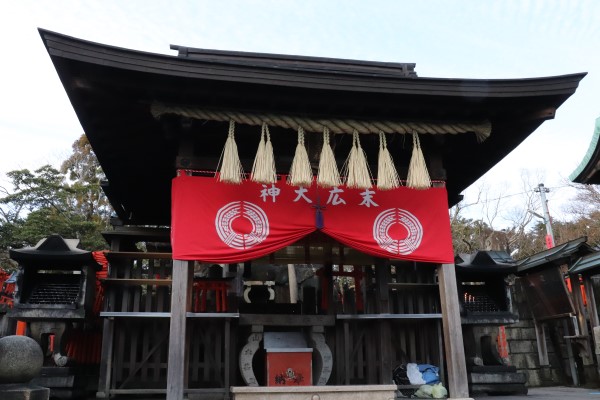Mount Inari: Hiking the Sacred Home of Inari
As the god of harvest, business, sake, and even fertility, people seek out Inari for a number of reasons. The principal shrine is Fushimi Inari Shrine in the southern part of Kyoto. The shrine covers Mount Inari with its iconic tunnel of vermillion torii tunnel. Starting from the bottom to the very top is a reasonably easy hike that should only take a few hours. But, Mount Inari is not just a great hike, but also a great place to many different forms of Inari Worship in one place.
Why Mount Inari is So Sacred?
Mount Inari (233m) is the southernmost mountain of the Higashiyama Mountain Chain. Fushimi Inari Shrine is the first of the many little shrines on this mountain built by the Hata clan.

Those little shrines were eventually relocated to their current locations ultimately creating what is now Fushimi Inari Shrine. There are seven of those little shrines on Mount Inari, namely: Gozendani Yohaisho, Choja-sha, Ichi no Mine, Ni no Mine, San no Mine, and Kojin Mine. However, outside of these seven, there are still many many more little shrines.
Otsuka
As you climb the mountain, you will see many stone markers, especially around the little shrines. Some people may assume those are gravestones, but they are private shrines called otsuka.
Historically, Inari Faith was a mix of many different regional folk religions, but after the separation of Buddhism and Shinto, Fushimi Inari became exclusively a Shinto shrine. Still, people who followed the Inari folk religion built their own Inari shrines on the mountain to enshrine their own Inari god.
If you take your time to walk around those little shrines, you can see many of these otsuka have the name of a different Inari god carved on them.

Hiking Mount Inari
About Mount Inari Hiking
The trail is roughly 5km and 2-2.5 hours. It starts from Fushimi Inari Shrine and the trail comes back to the shrine though it has several side trails. The main trail is clearly marked with vermillion torii. The trail is occasionally a steep, so may not be a good idea to go up the mountain when it is rainy or very hot.
There are vending machines along the way but as you go up, so do the prices. It is better to buy your drinks before you set off!
This is still a practice site of Inari Worshippers, meaning this is a sacred religious site.
To Yotsutsuji
To get to the hiking trail for Mount Inari, head to Okunoin from Fushimi Inari Shrine through Senbon Torii. From Okunoin, follow the path to Yotsutsuji. Many people go no farther than Okunoin, so there are significantly fewer people walking.
The seemingly never-ending vermillion torii are in fact donations. Various businesses make a donation to the shrine (roughly around $2,000 each) for a new torii, hoping for good fortune in exchange.



Climbing Mt. Inari
From Yotsutsuji, you can see a great panoramic view of Kyoto. This is usually the point where many people head back to Fushimi Inari Shrine. However, Yotsutsuji is the start of the circuit trail to the top of Mount Inari starts. The entire round trail is roughly 5km and took around 1.5-2 hours to come back to Yotsutsuji.
To the right will take you on a clockwise trail up the mountain and the left will take you counterclockwise. If you take the counterclockwise trail, you will probably find the trail to be a little less steep way might be less steep. We took the clockwise trail though and didn’t find it all that strenuous.


Gozendani Hohaisho is one of the little shines built on the former Inari Shrines. Allegedly, the offerings to gods were cooked here.
Around Gozendani Hohaisho, there are so many otsuka near the little shrine. If you go off the main trail just a little, you can clearly take a close look at it, as there are few people there.
While you are there take a look at the otsuka. These otsuka list the names of the god(s) it enshrines, yet those gods neither appear in the Kojiki nor Nihon Shoki. Rather, they are personal Inari gods named and enshrined by individuals. Creating your own god might seem a little strange, if not outrageous, but it is very natural to Japanese people.



15 minutes from Gozendai Hohaisho is Choja-sha, which enshrines Kamo no Tamayorihime, or Princess Tamayori, the goddess of Kamo Shrine.



To Ichi no Mine
On the top of Mount Inari is Ichi no Mine. Mount Inari is only 233m high, it feels quite far from the shrine grounds. Ichi no Mine enshrines Suehiro Okami, who I believe is one of the Inari gods.


Even at the top of the mountain around Ichi no Mine are a large number of otsuka. I think this place speaks volumes about how the Japanese people interpret spirituality. On one hand, you have the established ideology, yet it is flexible and allows for many different, and personal variations of those beliefs.
Climbing Down Mt. Inari
From Ichi no Mine the steep incline finally starts her and the trail starts to descend. However, there are still many otsuka and small shrines on the way.




The last little shrine, Kojin Mine is up the stairs from there. Try not to miss it!!



Inariyama
| Address |
|
|
| Website |
|
|
| Getting To |
|
|
| Hours |
|
The mountain is open 24/7, but climbing at night is not recommendable. |
| Admission |
|
|
| Note |
|
|


Leave a Reply